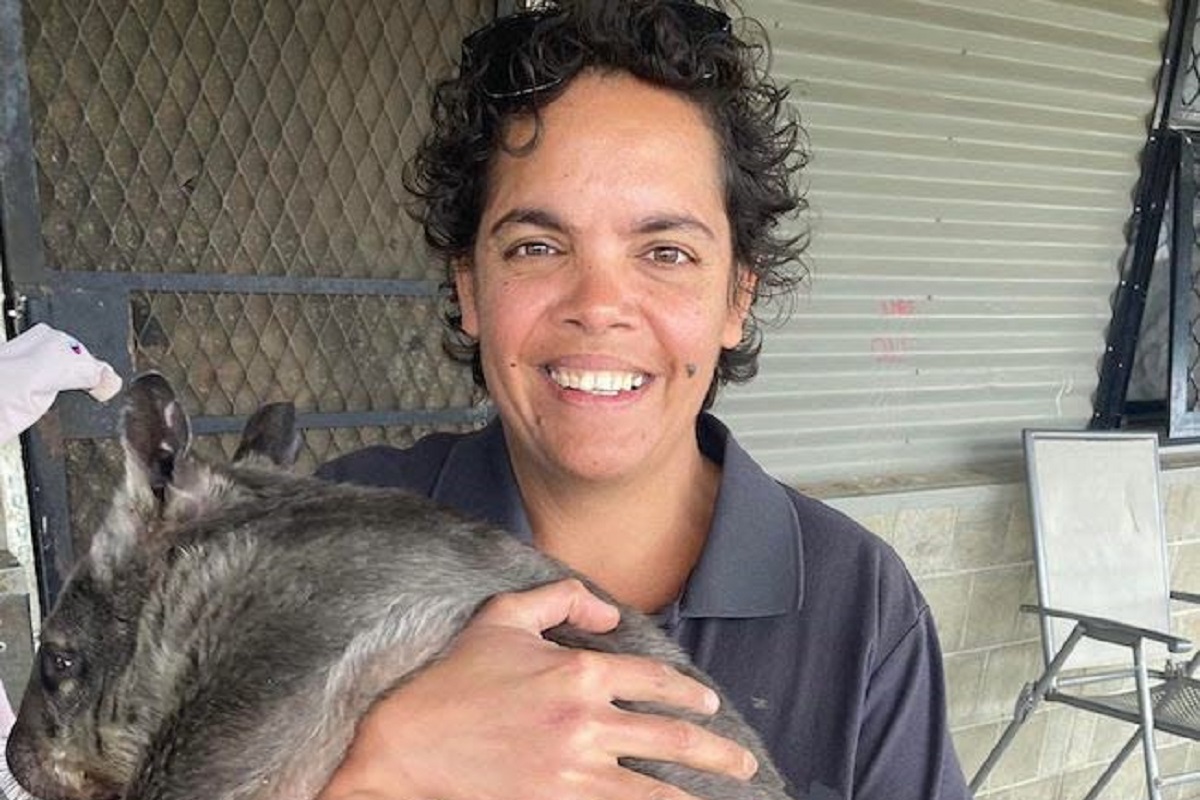Bindee Davis knew she wanted to be a veterinarian at just seven years old, when she wrote down she wanted “to be a vet” in her primary school’s time capsule. After spending her early years bringing injured wildlife home from school and hanging out at local vet clinics in her spare time, she undertook year 10 work experience at a mobile veterinary clinic. It was then that she knew for sure: becoming a vet was her calling.
However, after dropping out of school at age 14, it took Davis years – and a convoluted journey working as both a kennel hand and a nurse – before she finally realised her dream. Currently she is studying veterinary science in Adelaide, where she resides.

Davis, an Aboriginal woman originally from Darwin, has had to overcome a number of challenges to reach her goal, including “self-doubt, racism, isolation, moving away from family and support, all while raising a young family.”
With only 0.6 per cent of veterinarians self-identifying as Indigenous (Australian Census, 2021), compared with 3.3 per cent of the national general population, there are higher barriers to entering the veterinary profession for First Nations people compared with those from non-indigenous backgrounds.
“For kids growing up in remote Aboriginal communities, vet clinics can be hundreds of kilometres away,” says Davis. They can also be “financially inaccessible for their families, and often lack diversity in their staffing”.
In celebration of World Veterinary Day 2023, we reflect on this year’s theme: ‘Promoting Diversity, Equity, and Inclusiveness in the Veterinary Profession’. For Davis, this means “supporting pathways into and throughout the degree for students from diverse cultural, geographic, and socio-economic backgrounds.” Also, it is essential to ensure that there are relatable role models for kids who might not have considered veterinary science as a possibility. This can be achieved by “employing vets with diverse backgrounds [to make our] services more culturally safe and increase representation.”
Some practical ways the veterinary profession can increase the accessibility to veterinary science include:
- committing to cultural humility and implementing culturally safe practices
- creating workplace cultures that recognise not everyone has the same opportunities and privileges
- actively participating in local, regional, national and online events to support diverse communities
- increasing diverse representation by employing staff from diverse backgrounds, undertaking audits of stock imagery use with diversity in mind and petitioning media outlets
As the veterinary profession’s peak professional body, the AVA is committed to promoting diversity, equity and inclusiveness. Recently, AVA President Dr Bronwyn Orr and AVA CEO David Andrews attended the Veterinary Kaleidoscope Summit, the first Australian event specifically about exploring diversity and inclusion in veterinary science, to learn how we as a profession can enhance inclusiveness in our workplaces and communities.
Additionally, an AVA-moderated panel for World Veterinary Day, entitled ‘DEI in the Veterinary Profession: Where are we and what do we need to do next?’, features veterinarians from diverse communities: Dr Alex Harrison, Dr Cam Raw, Dr Suffien Suharju, Dr Kate Toyer and Dr Jodie Wilson. This panel, freely available for all veterinarians whether members or non-members, employs the use of closed captioning to ensure accessibility and will be available on replay for those unable to attend.
As for where Davis sees herself post-graduation, she says she is looking forward to “giving back to the communities, whether it’s delivering community veterinary services, or giving back in other ways through advocacy and mentoring the next generation of Aboriginal vets”.
She’s already started that process through her work with AMRRIC (Animal Management in Rural and Remote Indigenous Communities), a national not-for-profit that uses a One Health approach to work in partnership with remote Indigenous communities to deliver veterinary and animal-focused educational services.
Having been a member of AMRRIC’s Aboriginal and Torres Strait Islander Advisory Committee since 2017, she has also been a regular team member on their remote community veterinary and education programs. During these outreach programs, Davis acts as a door-to-door community liaison, talking to residents about available services, getting informed consent and recruiting and transporting animals for desexing. Plus, in her capacity as a vet nurse, she assists with desexing surgeries by monitoring anaesthetics and recoveries, and provides community-wide antiparasitic treatments.
“As a group, the committee is really, deeply connected to remote communities right across Australia, and it’s through these connections that we’re able to bring community-based perspectives to AMRRIC’s governance,” says Davis.
“Working with AMRRIC allows me to expand my network of vets and vet nurses – many of whom volunteer their time to assist these programs. I also get huge personal satisfaction, returning regularly to communities that are familiar with me, and helping to improve community health and wellbeing through animal health services.”

Despite her lofty goals, which have taken her all across Australia, her driving force has always been closer to home.
“Doing these programs with AMRRIC is my jam, my fire that lights my passion to give back to communities.
“It’s very close to my heart. I’m in my element and most happiest when I’m doing my thing out there, doing what I do best.”
This article was originally written by Keshe Chow for the Australian Veterinary Association and has been shared with permission.
To stay up to date on the latest industry headlines, sign up to the Pet Industry News e-newsletter.

